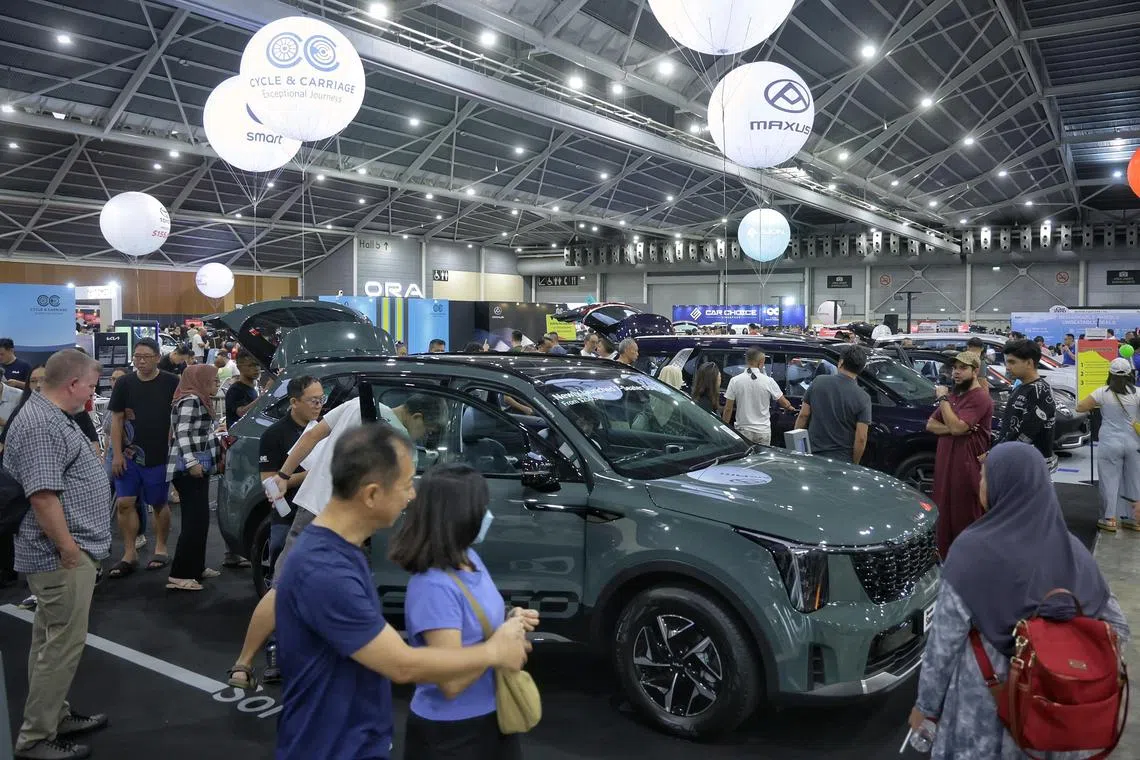News analysis
Injecting more COEs no guarantee prices will drop if demand is not addressed
Sign up now: Get ST's newsletters delivered to your inbox

From February 2025, LTA will progressively add up to 20,000 COEs into the system over the next few years.
ST PHOTO: KEVIN LIM
Follow topic:
SINGAPORE - On Oct 29, the Land Transport Authority (LTA) announced that from February 2025, it will progressively add up to 20,000 certificates of entitlement (COEs) into the system over the next few years.
The authority cited two reasons that allowed it to make the move – reduced vehicle usage from 2019 to 2023, and its ability to better manage traffic congestion with the new satellite Electronic Road Pricing (ERP) system.
The injection of COEs
LTA has not specified how it will distribute the additional COEs across the five vehicle categories, or over how many years.
This means it will have the flexibility to increase vehicle population by up to 2 per cent of current levels without being bound to a fixed formula or by a set deadline.
The move comes as the overall COE supply has increased, with more COEs projected to be available over the next few years.
At 49,890 pieces, the total supply of COEs from January to October 2024 is 45.7 per cent above what was available for the same period in 2023.
LTA has made several COE supply interventions since 2023, starting with what was labelled a one-time adjustment in May 2023 with COEs that are due to expire in the future.
Since then, this practice of redistributing future COEs – also known as “cut and fill” – has been a regular fixture.
LTA announced additional COE reallocations two more times in 2023 – once for October, and then for the November 2023 to January 2024 period
Some motor traders saw the timing of the latest announcement as LTA’s attempt to cool consumer demand in the immediate term.
This comes as the price of Category A COEs, which are meant for less powerful cars and electric vehicles (EVs), crossed the $100,000 mark in recent tender exercises,
So, this may be the category that needs a greater supply, though it remains to be seen whether LTA will decide to allocate more COEs there.
Transport economist Walter Theseira from the Singapore University of Social Sciences said that historically, COE premiums tend to be driven strongly by supply. “If we inject more supply, and if significant, it will stabilise and moderate prices,” he said.
In its announcement, LTA said adding more COEs after implementing new traffic management tools is not without precedent.
There were two such instances in the past.
With the implementation of the ERP system, the Government promised in 1997 to release 15,000 to 20,000 COEs over three to four years. It started with 5,500 COEs introduced over 12 months from May 1997 to April 1998.
The final tally of these additional COEs injected was not given. LTA said on Oct 29 that the Government added 10,500 COEs between 1997 and 2003 when the ERP system was introduced.
Going further back, the Government added 4,053 COEs over 12 months from May 1994 after rolling out the whole-day Area Licensing Scheme – the predecessor of the ERP system.
This amounted to a 9 per cent increase in the vehicle population at that time, excluding motorcycles.
Going by what was done more than 20 years ago, it is unlikely that the latest injection of up to 20,000 COEs will follow a specific pattern of distribution.
Instead, the COEs will be dispensed as and when LTA sees a need for them.
LTA also said it will “consider further calibrations to the vehicle population in the future, as further data and tools made available by ERP 2.0 come on stream, including the possible option of introducing distance-based charging”.
This leaves the door open to future injections of COEs to increase the vehicle population, with the possibility of higher usage charges in areas that experience congestion to manage traffic.
It is important to note that ERP is a traffic management tool. While it may keep the roads free flowing enough to accommodate more cars, motorcycles and trucks, increasing the vehicle population places a greater demand on other infrastructure, be it parking, or in the case of EVs, more charging stations. The adequacy of infrastructure will not be an issue any time soon, but bears watching down the road.
In the immediate term, the most favourable outcome from the announcement of more COEs would be that premiums dip because consumers are delaying their purchases.
Mr Neo Nam Heng, chairman of diversified motor group Prime, is among the industry players who expect car showrooms to be quieter in the near term as buyers could stay on the sidelines in anticipation of more supply of COEs down the road.
But a fall in premiums is likely to send buyers back to the showroom and increase demand.
If that happens, chances are, premiums will rise again, and the cycle repeats.
Upping the COE supply over the past 18 months has not meaningfully brought down premiums. Perhaps it is time to address the drivers behind what seems to be a never-ending surge in demand for vehicles.


